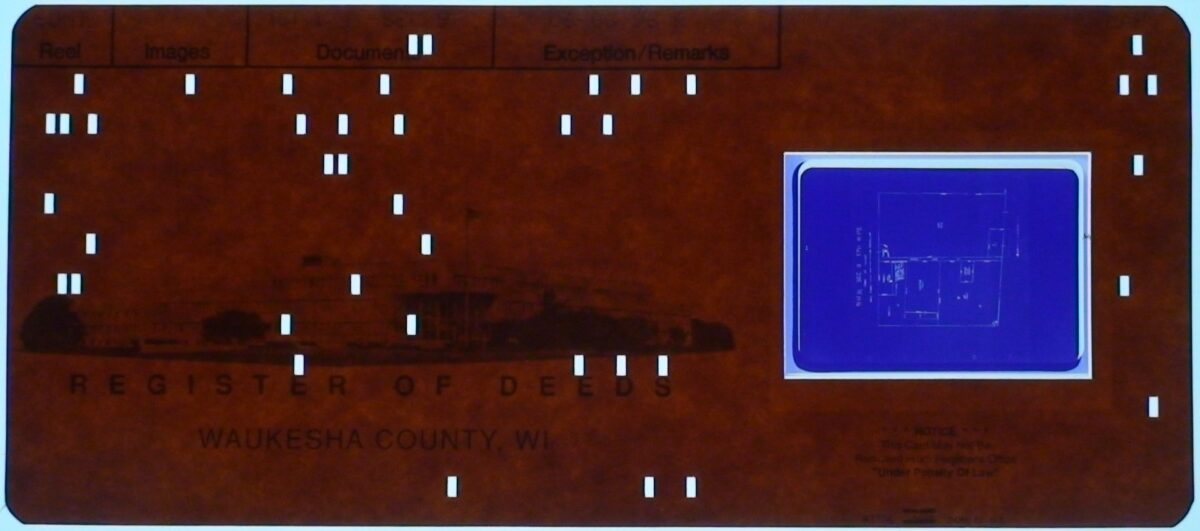You might have seen aperture cards tucked away in libraries, historical societies, and government offices, where countless treasures lie. These unassuming envelopes, each housing a single frame of microfilm, hold a wealth of information. Aperture cards have been a reliable storage solution for decades, from blueprints and engineering schematics to historical photographs and legal documents.
But time can take its toll. As technology advances, the need to safeguard the valuable records contained within these cards becomes vital.
Here’s where the magic of aperture card scanning services comes in. By embracing digital preservation, you unlock benefits for yourself and future generations.
A Legacy Secured: Safeguarding the Past for the Future
Physical aperture cards face a variety of threats. Environmental factors, like temperature changes and humidity, can cause the film to deteriorate. Over time, the acetate base can become brittle, and the images can fade, losing their clarity and detail. Additionally, physical cards are susceptible to accidental damage or loss.
Scanning aperture cards offers a powerful solution. You create a permanent and secure archive by converting the information into high-resolution digital files. These digital copies are not affected by environmental conditions and are less prone to accidental damage or misplacement. Imagine – the vital records you hold safe today will be readily accessible for generations.
Unlocking Accessibility: Embracing the Power of Digital Archives
Remember the frustration of searching through a sea of aperture cards to find specific information? Physical cards can be cumbersome and time-consuming to navigate. Aperture card scanning services unlock a new era of accessibility. Digital files can be easily indexed and categorized using keywords, dates, or project names. This allows for quick and efficient retrieval, saving you valuable time and resources.
Furthermore, digital archives offer a level of accessibility previously unimaginable. With proper security measures, these files can be shared with researchers, historians, and the public, fostering collaboration and helping you gain a deeper understanding of the past.
Enhanced Clarity: Revealing Details You Might Have Missed
Modern scanning technology boasts incredible precision, capturing every detail from the microfilm.
During the scanning process, dust, scratches, and other imperfections can be digitally removed, often surpassing the quality of the original card. Faded text becomes sharp and legible, and even
minute details become clearly visible, revealing information that may have been obscured before.
Imagine architectural blueprints with every line and dimension perfectly preserved or historical
photographs showcasing newfound clarity in clothing styles and facial expressions.
Space Optimization: Decluttering Your Archive While Preserving History
A familiar sight at many archives are rows and rows of filing cabinets filled with aperture cards. But what if you could reclaim that valuable space while still ensuring the safekeeping of your records? Scanning allows you to do just that. Once the digital files are securely stored, the physical cards can be archived in a smaller, more controlled environment. This frees up valuable physical space for other important functions, allowing you to streamline your archival operation.
Streamlined Workflows: Embracing Efficiency in the Digital Age
Digital document scanning services offer numerous advantages. With scanned files readily available at your fingertips, sharing information becomes a breeze. Documents can be easily emailed, uploaded to cloud storage platforms, or integrated with existing document management systems. This streamlines collaboration and communication, allowing researchers and staff to access critical information quickly and efficiently.
Beyond Aperture Cards: A Gateway to Comprehensive Archiving
The benefits of digital archiving extend far beyond aperture cards. Document scanning services can also convert microfilm rolls, photographs, and even paper documents into secure digital formats. This approach helps you create a unified digital archive, encompassing a wider range of historical resources for future generations.
Taking Action: The Journey to Digital Preservation
Embracing digital preservation with aperture card scanning services is a wise investment in the future. Here’s what you can expect:
- Consultation and Planning: Discuss your specific needs and requirements with a reputable microfilm scanning service provider. They can help you choose the right scanning options and ensure a smooth transition to digital archiving.
- Secure Transport and Processing: Many services offer secure packaging and pre-paid shipping options for your aperture cards. Once received, the cards are carefully scanned using advanced technology.
- Quality Control and File Delivery: The scanned images undergo rigorous quality control procedures to ensure accuracy and clarity. You then receive your high-resolution digital files in your preferred format, ready for integration into your existing archiving systems.
Bottom Line
The stories and information housed within your aperture cards deserve to be preserved and shared. By embracing digital aperture card scanning services, you make an intelligent decision to safeguard the past for future generations.
Imagine researchers delving into historical records quickly or students gaining a deeper understanding of history through digital archives. The power of knowledge and the legacy of the past – carefully preserved, readily accessible, and forever protected.
Don’t wait to safeguard your valuable history! Contact Smooth Solutions today for a free quote on your scanning aperture cards. Breathe new life into your archives and unlock a world of possibilities for the future.

